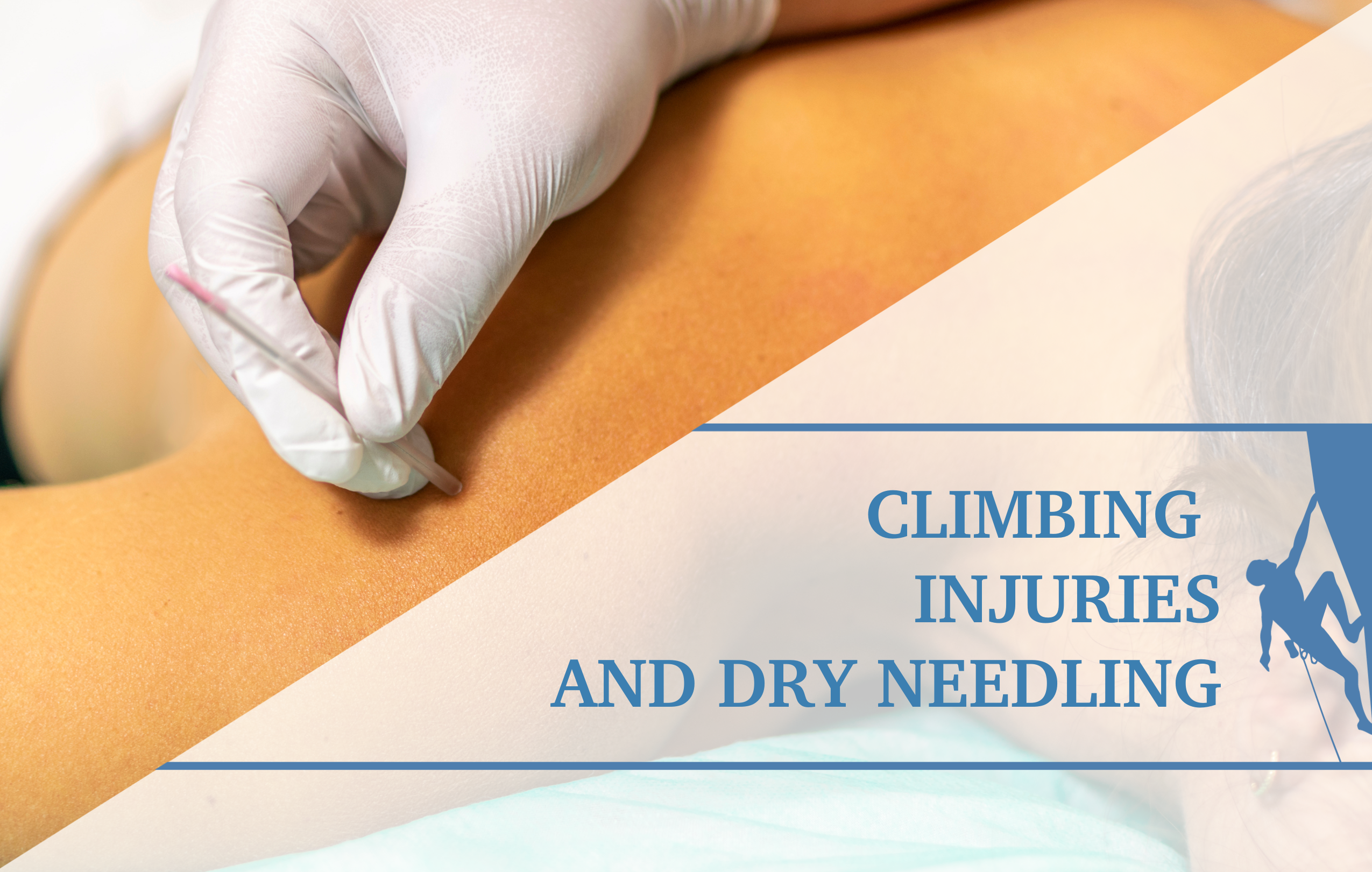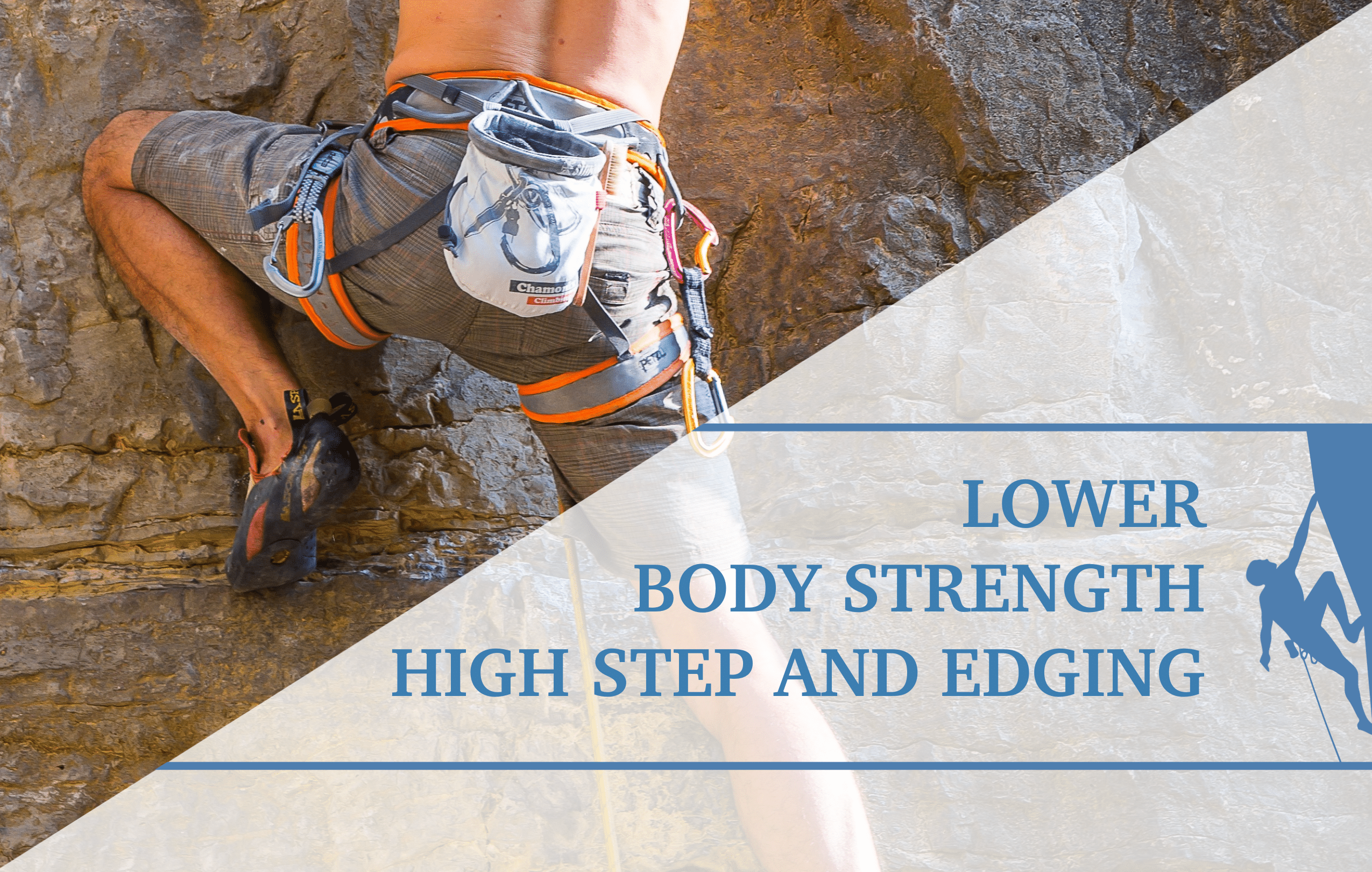Training With Your Cycle
** Almost all articles referenced in this post studied young eumenorrrheic (normal or regular menstruation) who were not on any oral contraceptives or hormone treatments **
Our periods tend to be the bane of our existence – cramps, intense food cravings, back pain, irregular bleeding – the list goes on and on…and on. In summary, we’ve all had days where we felt like our periods were our limiting factor – whether it was the pain, anxiety, fear, or simply inconvenience of it all.
In the midst of my frustrations, Alex Stiger posed a question on the Training Beta Podcast that sent me diving into research on the menstrual cycle and the effect it has on training. Most of the time, we look retrospectively and connect the dots as to why you weren’t able to do that one move you stuck multiple times last session. What if we could predict the effects our cycle will have on our training and use it to our advantage?
In order to do that, we need to have a basic understanding of the phases of our menstrual cycle.
Phases of the Menstrual Cycle
Our cycles start the day we start bleeding and can be broken into two phases, the follicular and luteal phase, with ovulation occurring between these two phases.

- Follicular phase: time between the first day of your period to ovulation
- Luteal phase: time between ovulation and your next period
Each phase is associated with different levels of sex hormones – specifically progesterone, estrogen, and testosterone.
- Progesterone – responsible for increasing breakdown of protein
- Estrogen – responsible for reducing breakdown of protein (protective mechanism)
- Testosterone – responsible for growth, maintenance, and repair of muscle
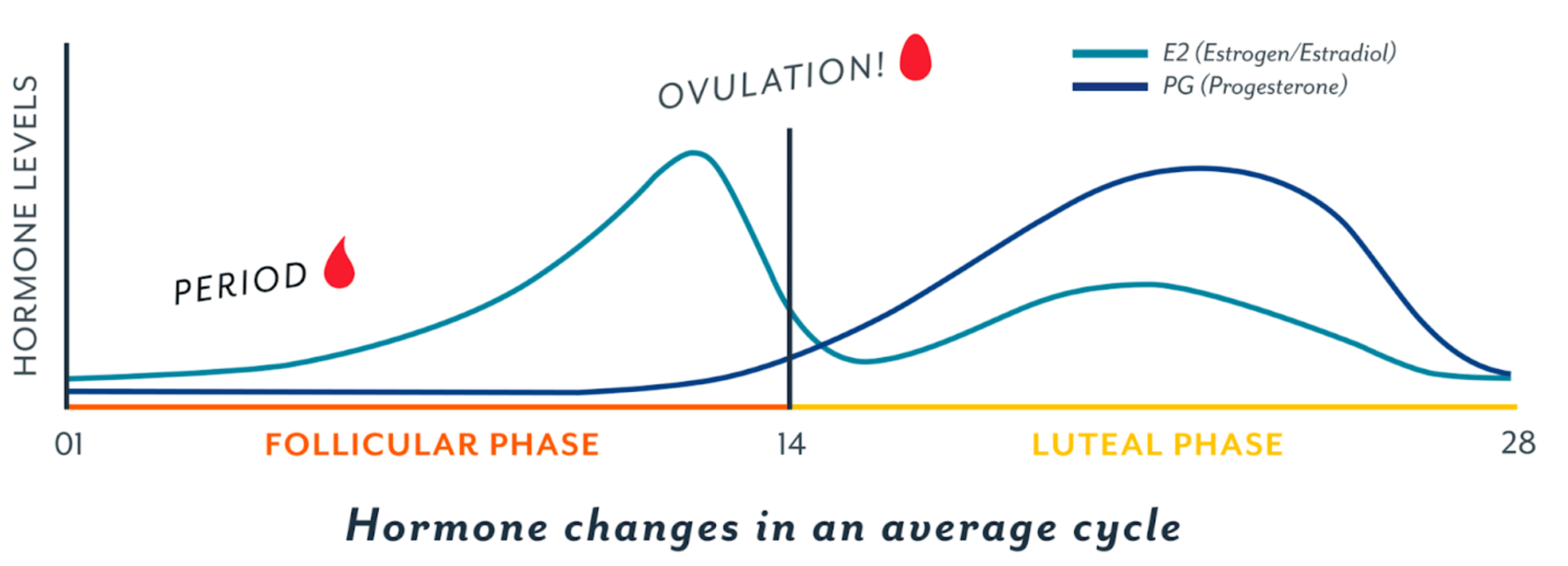
In the figure, you can see the large fluctuation of progesterone and estrogen throughout our cycles. The effect our cycle has on our bodies does not depend on the concentration of each individual hormone in our body, but the ratio between them5; a higher estrogen to progesterone ratio (E/P ratio) during the follicular phase creates the ideal environment for building muscle strength, endurance, and size.1,5
The follicular phase is generally associated with overall lower hormone levels – however, the E/P ratio is high compared to the luteal phase. There is a spike in estrogen around the ovulation day, followed by the luteal phase which is characterized by the higher progesterone levels, lower testosterone levels, and a low E/P ratio.7,9 Many of our symptoms and our psychological and physiological responses to exercise are related to these hormonal fluctuations.
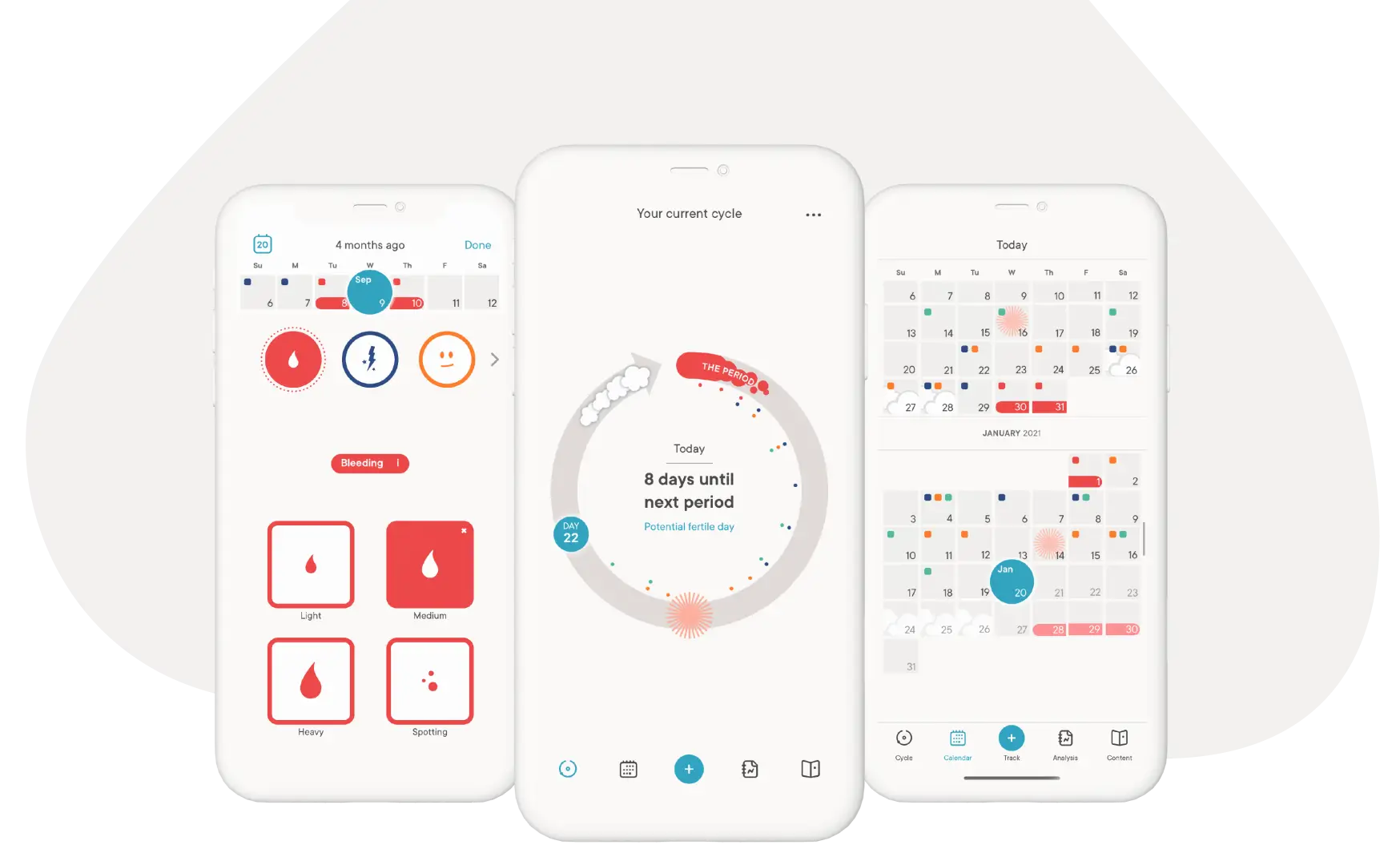
Effects of the Menstrual Cycle on Our Bodies
While there is a large spike in estrogen levels right around the time we ovulate, our bodies experience the most change when our estrogen and progesterone levels rise during the luteal phase. Here are some of the responses our bodies have to the change in hormone levels:
Elevated Core Body Temperature, Heart Rate, and Breathing
Have there been times you wake up because the blankets are just too warm that night? Or maybe you notice that as you’re working out, you feel a lot warmer than you normally do. This could be a symptom of the rising progesterone in your body.2 Multiple studies have shown that your baseline body temperature, heart rate, and breathing will be elevated during the luteal phase. Although the changes are minimal (about a 0.2-0.5 degree C rise in temperature), it’s enough to feel the difference, and I know from personal experience that I don’t climb as well when I feel hot and uncomfortable. As you track your cycle, take into consideration the change in temperature and consider adding something like a cold shower to your routine to stay cool.
Increased Rate of Perceived Exertion
Rate of perceived exertion (RPE) is a way for researchers and trainers to gauge how difficult an activity or exercise is to someone. The images below are the two scales that are generally used to rate the difficulty of an exercise. People will be asked to rate what number on the scale they are at during or after an exercise. Essentially, the higher the number, the more difficult the exercise is perceived to be.
During the luteal phase, women have reported higher RPEs following exercises ranging from walking to high intensity workouts.3,6 In other words, whether or not there are any actual physical changes to your training, exercising and training will just feel harder. Next time you feel like you’re struggling through an exercise or a route more than usual, understand that your body will generally feel more fatigued in this stage of your menstrual cycle.
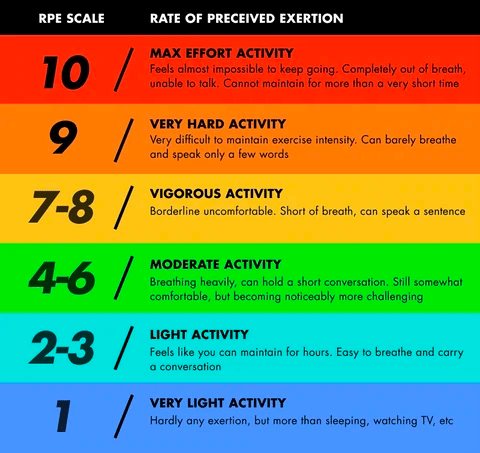
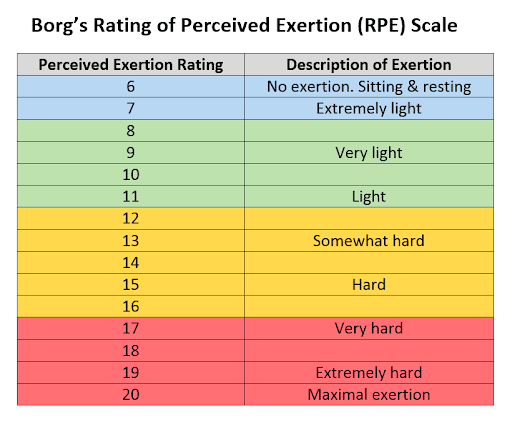
Intensified Psychological Responses During High Intensity Exercise
We all know our menstrual cycles can affect our emotions, but how does it affect our mind in response to exercise? Researchers have found that during the luteal phase, there is increased amygdala activity.9 The amygdala is responsible for processing fearful stimuli – a part of our fight or flight response. This means that our fear response and anxiety are biologically elevated during this time. Taking the time to ease yourself into a scary climb with practice falls rather than going straight for that big crux right off the bat could help calm your nerves and reduce your hesitation on the wall.
Follicular Training
So how should you take full advantage of your menstrual cycle to make gains in your climbing? Research has shown increased muscle strength and size with what we call follicular-based training.7 Follicular-based training, as the name suggests, focuses high-intensity strength training workouts in the follicular phase of your menstrual cycle. There is a higher ratio of estrogen/progesterone during the follicular phase, creating a more suitable environment for muscle growth and development. In other words, you can use the first 2 weeks of your menstrual cycle to work through your harder projects and plan for longer sessions.
You can consider the luteal phase of your menstrual cycle as time for skill development. You don’t necessarily have to stop your strength training or climbing, but you can focus more on developing new skills, movements, and exercises. The luteal phase would be a good time to learn a new type of squat or try different betas for your project. You can even take the time to practice fundamental climbing techniques (flags, foot switches, heel hooks, etc.), climbing form, and postural/mobility exercises. Even if you don’t feel 100% during this time in your menstrual cycle, remember there are still many foundational exercises you can do that will enhance your climbing and bring you to the next level.
Summary Table

References
- Haines M, McKinley-Barnard SK, Andre TL, Gann JJ, Hwang PS, Willoughby DS. Skeletal Muscle Estrogen Receptor Activation in Response to Eccentric Exercise Up-Regulates Myogenic-Related Gene Expression Independent of Differing Serum Estradiol Levels Occurring during the Human Menstrual Cycle. J Sports Sci Med. 2018;17(1):31-39. Published 2018 Mar 1.
- Hayashi K, Kawashima T, Suzuki Y. Effect of menstrual cycle phase on the ventilatory response to rising body temperature during exercise. J Appl Physiol (1985). 2012;113(2):237-245. doi:10.1152/japplphysiol.01199.2011
- Nose Y, Fujita K, Wada T, Nishimura K, Hakoda M. Effects of Menstrual Cycle Phase on Fluid Regulation during Walking Exercise. J Sports Sci Med. 2020;19(3):556-563. Published 2020 Aug 13.
- Olean-Oliveira T, Figueiredo C, de Poli RAB, et al. Menstrual cycle impacts adipokine and lipoprotein responses to acute high-intensity intermittent exercise bout. Eur J Appl Physiol. 2022;122(1):103-112. doi:10.1007/s00421-021-04819-w
- Oosthuyse T, Bosch AN. The effect of the menstrual cycle on exercise metabolism: implications for exercise performance in eumenorrhoeic women. Sports Med. 2010;40(3):207-227. doi:10.2165/11317090-000000000-00000
- Prado RCR, Silveira R, Kilpatrick MW, Pires FO, Asano RY. The effect of menstrual cycle and exercise intensity on psychological and physiological responses in healthy eumenorrheic women. Physiol Behav. 2021;232:113290. doi:10.1016/j.physbeh.2020.113290
- Sung E, Han A, Hinrichs T, Vorgerd M, Manchado C, Platen P. Effects of follicular versus luteal phase-based strength training in young women. Springerplus. 2014;3:668. Published 2014 Nov 11. doi:10.1186/2193-1801-3-668
- Thompson B, Almarjawi A, Sculley D, Janse de Jonge X. The Effect of the Menstrual Cycle and Oral Contraceptives on Acute Responses and Chronic Adaptations to Resistance Training: A Systematic Review of the Literature. Sports Med. 2020;50(1):171-185. doi:10.1007/s40279-019-01219-1
- van Wingen GA, Ossewaarde L, Bäckström T, Hermans EJ, Fernández G. Gonadal hormone regulation of the emotion circuitry in humans. Neuroscience. 2011;191:38-45. doi:10.1016/j.neuroscience.2011.04.042
About the Author
My name is Katrina and I am currently a 2nd year Doctor of Physical Therapy student at Chapman University. I recently discovered the world of climbing and fell in love with the sport and community that surrounds it. As I continued to climb, I realized I was hitting a block that most people around me weren’t experiencing and spent some time looking into why that was. I came across information on women-specific training and now I’m hoping some of this information can be utilized to enhance your own training and how you train others!

- Disclaimer – The content here is designed for information & education purposes only and the content is not intended for medical advice.



